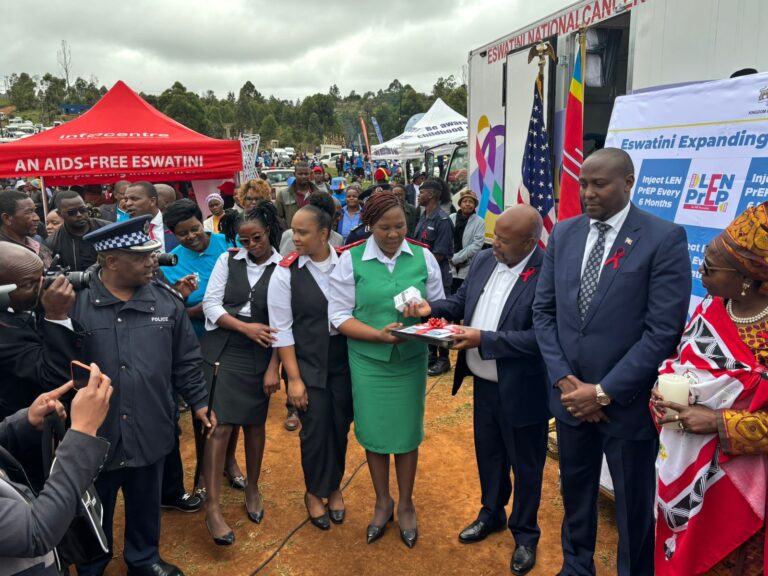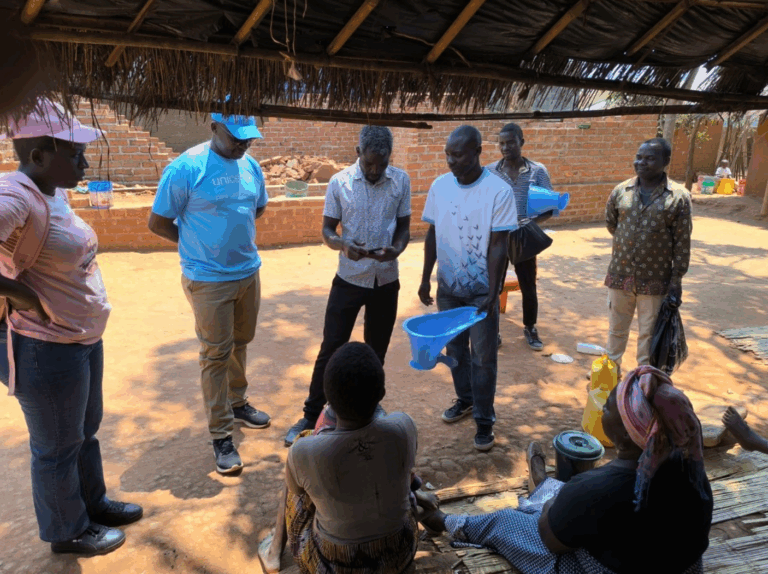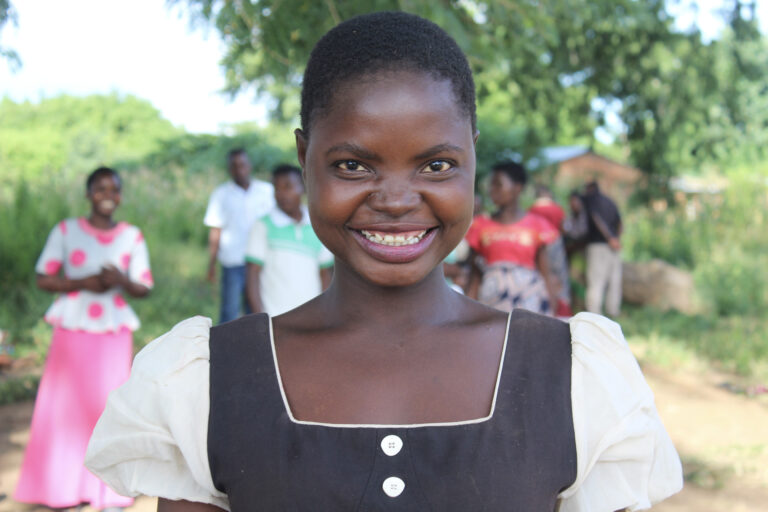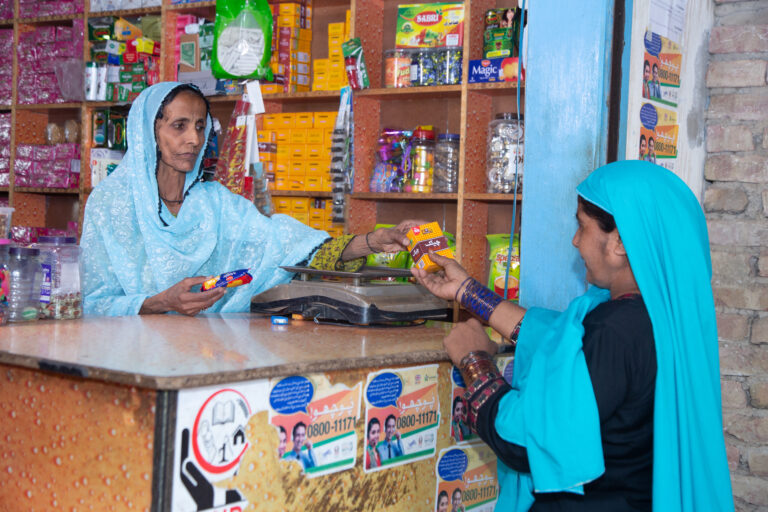A conversation during the 2023 Concordia Annual Summit.
PSI President and CEO Karl Hofmann joined leading health organizations in conversation during the 2023 Concordia Annual Summit, a public-private sector forum to establish market-led solutions to today’s greatest challenges. Watch the video or read the transcript, below.
Alejandro Rincon, New York Correspondent, NTN24: Thank you so much for joining us this afternoon. First, I’m going to introduce everybody in our discussion. Shannon Thyme, she’s the Chief Legal Officer and President of the Moderna Charitable Foundation. Thank you so much, Shannon, for being with us. Also, Anil Soni, who is the CEO of the WHO Foundation, thank you so much for being with us. And then we also have the pleasure of the honorable Karl Hofmann, President and CEO of Population Services International, as well as Elizabeth Staudinger, who is part of the managing board of Siemens Healthcare…
Shannon, we can begin with you.
From your experience, what do you think are the best lessons that we have learned on equitable vaccine distribution and the role of Moderna in this process?
Shannon Thyme, Chief Legal Officer and President, Moderna Charitable Foundation: Thank you for the question and thank you for having us. For Moderna, we’re trying to have the greatest impact on human health that we can and that includes ensuring equitable access to vaccines. We saw four things that we think public-private partnerships need to come together to solve if we’re going to create the kind of sustainable health systems that lead to better outcomes.
The first is understanding our reliable procurement mechanism for low- and middle-income countries. Gavi COVAX did a nice job stepping in during an emergency, but how do we make that more robust, so you don’t need to lean in so quickly?
Second, is thinking about global supply chains. Asking countries not to create trade restrictions or export blocks, but to allow free movement of goods across the supply chain quite quickly so everybody can have access to important healthcare.
Third, is working together in the regulatory system. How do we get regulators to come together and understand how to move more quickly, how to build clinical trial capabilities and again, how to create a system that becomes self-sustaining for future pandemics? And, finally, data and data transparency. How do we make sure everybody, both regulators but also individuals, has the facts they need to make the right decisions?
AR: Now in that context, let me jump now to you Anil, because one of the main discussions that we have had throughout this crisis is collaboration and strengthening between the public and private sector. From your experience, is there any challenge that you would like to highlight? What actions can be taken to be more resilient in the future?
Anil Soni, CEO, WHO Foundation: One of the lessons coming out of the pandemic and the work of the World Health Organization (WHO) was around accurate information and the risk of misinformation. For any of you who’ve had a challenging moment in your health or if there was a new virus, you open the Internet, you go to Google and you ask yourself: How is this transmitted? What do I do to keep myself safe? What’s the appropriate treatment? In fact, information on the Internet is now one of the most important determinants of people’s healthcare.
So, during the pandemic, social media companies recognized that they had an important responsibility to make sure that accurate information around the pandemic was available to anyone around the world. The WHO worked with Google, Meta, and other social media companies so that hundreds of millions of people around the world had access to accurate information in multiple languages. That work is continuing because the pandemic’s emergency phase may be over, but there are a lot of health threats that we’re facing and there is a lot of misinformation online. So those very companies, Meta, and Google, are cooperating through the WHO, not necessarily with one another, but through the WHO on a health misinformation claims platform.
Essentially, their employees can go to The WHO and say – “we’re seeing online chatter that says this disease is spread in this way” – and the WHO can either confirm or deny, and that can then be promoted through online search. So that’s great, but it is reactive.
Part of where the WHO is trying to go, and this is going to require collaboration with the private sector, is getting proactive to actually say – how do we use tools like generative AI to make sure that the most accurate information and new evidence is getting out to healthcare providers and the general population as quickly as possible? That is going to absolutely require engagement with technology companies.
AR: You mentioned something which I think is great, and that is, how do we get out of the emergency mentality? Elizabeth, perhaps you can tell us about your experience at Siemens. What long-term actions do you think can be taken to build more resilient and equitable healthcare systems?
Elizabeth Staudinger, Member of the Siemens Healthineers Managing Board: When you look at health care, you can compare it a bit to the saying “it takes a village to raise a child.” That’s also a good way of looking at building a resilient healthcare system. You have to combine a lot of different elements to make sure that every component contributes and makes a difference.
For us, as a private sector company, there is of course certain products or solutions that we can bring to the equation. But that is only one of the pieces. And then we need to build on that and see, do we maybe need training? We need to make sure we upskill the healthcare workforce accordingly. We can also think about what other innovations we can bring to the table to make a difference, and connect the different players across the ecosystem.
AR: And then in that context, Karl, how do we strengthen these alliances between the public and private sectors on this same front?
Karl Hofmann, President and CEO, Population Services International: Thanks Alejandro. And first of all, let me say it is delightful to be next to two great private sector companies working in the healthcare space and the WHO represented here by Anil and the foundation, Moderna, a company that we’ve all come to know, and Siemens, a company we’ve known for decades. My own organization, PSI, is a global health nonprofit and we work in about 40 countries. But in the 50 years that we’ve been operating, the starting premise was really working with the private sector. Not the big international leading private sector companies, but local private sector players, because it is often the private sector that is delivering healthcare products and services to those who need it most because the public sector may be too weak to do so.
The private sector has been a part of our DNA from the very beginning. Over the years, we’ve come to understand that our work fundamentally has to be aligned with national healthcare policies in the 40 plus countries where we work. The Ministry of Health needs to be the steward of the health system, but we all know the health system is mixed. I’m not aware of any place, certainly no place that we work, where the healthcare provision is exclusively through the public sector or through the private sector. These sectors have to cooperate to make the whole system work effectively and equitably for everybody.
I think organizations like mine, which have this proclivity to work with the private sector, are trying to ensure that it is quality care and services that are being provided. So, I know there’s a quality piece to this, but there’s also a connecting-the-dots piece, a systems-thinking piece. We think about how to ensure that the regulators and the policymakers are looking at the private sector, and the way that it contributes to healthcare outcomes, in just about every geography we can think of, and ensure that it’s all aligned and delivering quality care for the people who need it. That’s the work we’re trying to do.
AR: I think it would be highly valuable for us to share any concrete experiences that highlight those stronger relationships between the public and private sector. If you can illustrate for us an example that you think is valuable, please jump in.
KH: We’ve had an experience over the last several years working on HIV self-testing technology. This is something that we could walk down the street to the nearest Walgreens or CVS and buy here in the US. You couldn’t buy it in many markets in the developing world, including those that were heavily impacted by HIV.
With the help of funding from UNITAID, we worked with private sector manufacturers, regulators, and policymakers to do what’s necessary to introduce self-testing as an HIV prevention strategy in 20-25 countries. Now, it’s expanded. Our intervention was really to pilot the idea, to create the regulatory framework, to introduce new providers, and then to exit and watch the market flourish, and it has. It’s absolutely flourished in our absence. So, it’s a great example of a development intervention that has turned into a sustainable market-led consumer-led intervention that is not going away anytime soon.
ST: I might just build on that. One of the things that we’re really excited about is what we’re doing through the Moderna Charitable Foundation. We’re working with social entrepreneurs like Vanessa Kerry at Seed Global, who is, to your point about healthcare being local and systems not being completely homogeneous, on the ground working in both clinical education and on the ground training of physicians in those countries.
Again, to go to the quality metrics, how do you improve the quality of healthcare in places where they may not have access to the same quality healthcare we do, while at the same time, working in the public-private space to make sure that you’ve got the manufacturing, you have the supply chain, and you have the delivery systems? But at the end of the day it’s on the ground where you have to make a difference.
ES: I would like to share a nice example from Kenya. We were looking at how to bring vaccines, medicine, but also blood testing to more remote locations where you may not have the right infrastructure in place. You don’t have the roads; you don’t have the broader facilities in place to serve these communities. We teamed up with a company that makes drones together with the local government and created a service where we use drones to actually shuttle both the medicines as well as the blood samples to the most remote areas and then back to the metro centers where you then can turn around the information. All of that was digitally connected, so you can also send the results of the tests directly back to the patients or the people in these remote areas. It’s a small example, but I believe a very fascinating one. How they can use technology to move beyond the barriers.
AR: Anil, any experience in particular that you’d like to share?
AS: What comes to mind, and this builds a bit on Karl’s example, before I joined the WHO Foundation, I was at a global pharmaceutical company. One of the things we tried to do was engage with consumer insights. And there’s a direct alignment. We were a company that wanted to sell products, but we wanted to sell products that were relevant. And by engaging with local stakeholders, you can design products that meet patient and consumer needs in a way that advances the company’s interest but also patient interest.
An example of that in South Africa was an initiative that’s still underway where we were combining HIV prevention and contraception. A single pill is doing both. The ability for young women to go to a pharmacy and purchase and take oral contraception was a way that they could be further protected with HIV prevention without the stigma associated with taking a pill to protect themselves from HIV.
AR: And finally, as we’re coming to a close to this very interesting conversation, what would you like to see in terms of the biggest challenges that should be addressed to strengthening these collaborations between public and private sectors?
AS: Well, especially given the topic of the panel, Brazilian healthcare systems, what I focus on in terms of urgency is the intersection of climate change and health, and the need for us to be much more engaged in thinking about building resilient healthcare systems relative to the risks of climate change. These are no longer years or decades in the future.
I was floored by the degree of the floods in Libya last week. There are people who are no longer alive right now because of climate change. People are dying of climate change all the time, and we don’t necessarily call it that. We have a lot of other specific causes of mortality or morbidity, but we need to reframe it because in Libya, it was the creation of storms that have never existed before putting pressure on infrastructure that had never been designed for that pressure, which led to the dams collapsing and entire towns and communities being wiped out. How do we anticipate that?
At this point, as much effort is going into mitigation. We can look and understand the degree to which communities are not prepared for what’s happening with climate change in terms of infrastructure. The number one infrastructure investment, it is not a silver bullet, it is not a medicine. It is healthcare workers. We absolutely need to invest in the healthcare workforce, but we can also stay ahead of disease patterns. We know dengue is going to explode. We know that’s happening. And if you can look ahead to what the health risks are, there are incredible solutions. There’s a couple of vaccines being developed for dengue. Of course, there’s also a naturally occurring bacteria that can prevent the mosquitoes from transmitting dengue to humans. We have to invest in those technologies now because the pace of the effects of climate change and human health are going through the roof.
ST: One of the things that we’re super focused on is how do you continue to drive a community? No one company, no one entity, is going to have the right answer. I think you see so often all the companies and governments go in with the right intention but they’re all solving the first step in the problem instead of coming together in a different way to convene and say – let’s split up the problem and segment it – so we actually get more of the problem tackled together as a community trying to build healthcare systems.
That’s something we’re focused on with our technology, just democratizing it through our mRNA access program. We’re working with researchers in academia and governments around the world on the emerging diseases that today do not have vaccines. I would love to see more people come together, to challenge us to do this as a community. I think we’re at a moment in time where we can make a tremendous difference if we do.
KH: Anil used the word from his time at a pharmaceutical company. And of course, I’m sitting between two representatives of big private sector companies. They tend to think about consumers. And I want to say, this nonprofit that I am proud to be associated with, we think about consumers, too. Consumer insight is the recognition that you have to start every intervention, no matter what you’re aiming for, by listening to the people you’re trying to serve. Treating them as consumers with agency, with choice, even though they may not have resources, they have the ability to make a choice. You want to treat them with the dignity that that represents. You’re treating them as the fundamental building block of health systems as opposed to the subject of health systems. The fundamental agent of a health system is the consumer, the individual. That’s the sort of transformational idea that we try and hold on to in designing our programs. And I think it’s a thread that unites everybody here, too.
ES: To wrap things up, I believe there is a lot of opportunity teaming up across the different players and working with the local communities. And one thing which is very important to me as I think about it is: how do we make things stick? Are we doing things in a way that’s sustainable? That they stand on their own feet. Because that is the foundation for something to take a hold, take roots and really make a difference. Not only in the first month or the first year, but for the years to come.
AR: As you have all seen, now more than ever, strengthening collaborations and participation between the public and private sector is more essential than ever. It’s been our hope and our pleasure that from our experiences we help guide those who are interested this topic, to create better, more resilient healthcare systems around the world.
Thank you everybody. It’s been a pleasure.



















